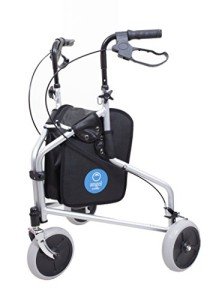As people age, keeping mobility becomes important for maintaining independence and quality of life. For many seniors, walking aids such as walkers use a valued option to help them browse their environment safely and with self-confidence. This post looks into the diverse world of senior walkers, including their types, benefits, usage, and some regularly asked questions.
Walkers, frequently described as walking frames, are mobility aids developed to offer assistance and balance for individuals who may have trouble walking individually. They usually consist of a sturdy frame, grips for holding, and sometimes, wheels for ease of movement. Comprehending the various types of walkers available can assist seniors and their caretakers make knowledgeable decisions.
| Walker Type | Description | Best For |
|---|---|---|
| Requirement Walker | A four-legged frame that must be lifted to progress. | Seniors needing maximum stability. |
| Two-Wheeled Walker | A walker with 2 wheels on the front for simpler mobility. | Those with small balance issues. |
| Four-Wheeled Walker | A walker with 4 wheels, typically includes a seat and brakes. | Active seniors requiring mobility and rest durations. |
| Rollator Walker | A kind of four-wheeled walker that is lightweight and foldable. | Seniors who are more active and need minor assistance. |
| Platform Walker | A specialized walker with a platform for assistance, typically used in physical therapy. | Individuals requiring particular support for injuries. |
Senior walkers provide numerous benefits that significantly enhance the mobility and independence of elderly people. Here are some of the most significant benefits:

When selecting a walker, different elements must be considered to ensure the very best fit. Below are bottom lines seniors or caregivers should assess:
To optimize the benefits and decrease risks associated with walkers, correct usage strategies are essential. Here are steps seniors ought to follow:
The rate of senior walkers can differ based upon features and materials utilized. Requirement walkers may cost as low as ₤ 30, while advanced models with wheels and seats may range from ₤ 50 to ₤ 150.
Signs that a senior may require a walker can include regular stumbling or losing balance, a current surgical treatment or injury affecting mobility, and avoiding walking or engaging in social activities.
Yes, walkers can be a crucial part of physical therapy, helping seniors regain strength and agility through safe movement.
Walkers can be acquired at medical supply stores, drug stores, or online retailers. Some insurance coverage plans might even cover part of the expense.
Regular upkeep includes examining for loose parts, guaranteeing brakes work properly, and cleaning up the frame to prevent rust or wear.

Senior walkers are an indispensable resource for preserving mobility and self-reliance as one ages. With various types of walkers offered, it is important for seniors and caregivers to consider personal requirements, usage, and comfort when picking a proper walking aid. By motivating safe mobility, walkers not only enhance physical abilities however likewise favorably effect social connections and mental wellness.
Through appropriate use and care, seniors can delight in an active, interesting lifestyle, boosted by the assistance of their walker. Understanding the value of mobility aids like walkers is essential in promoting boosted life quality for seniors facing mobility obstacles.
No Data Found!

